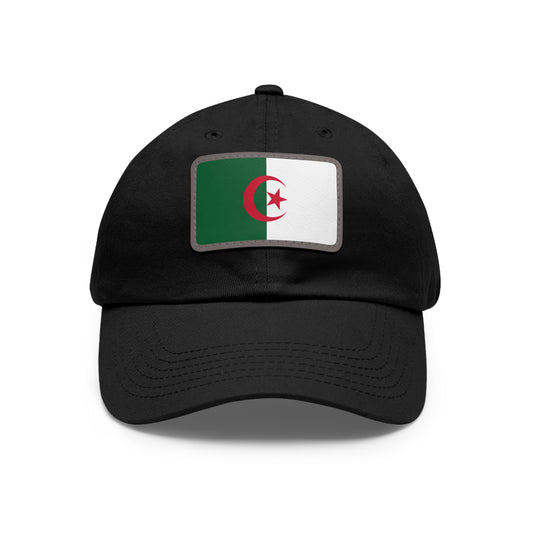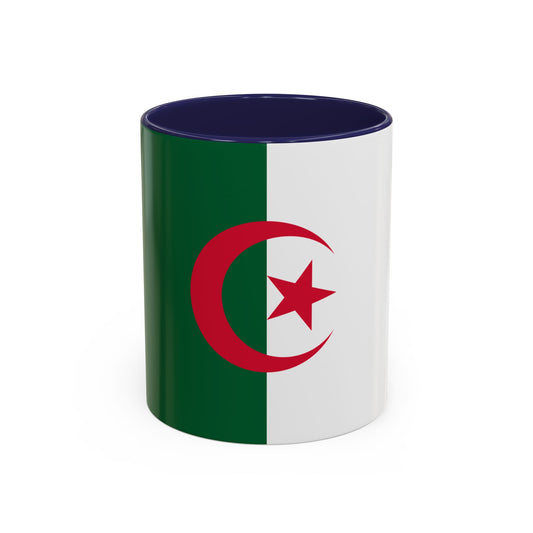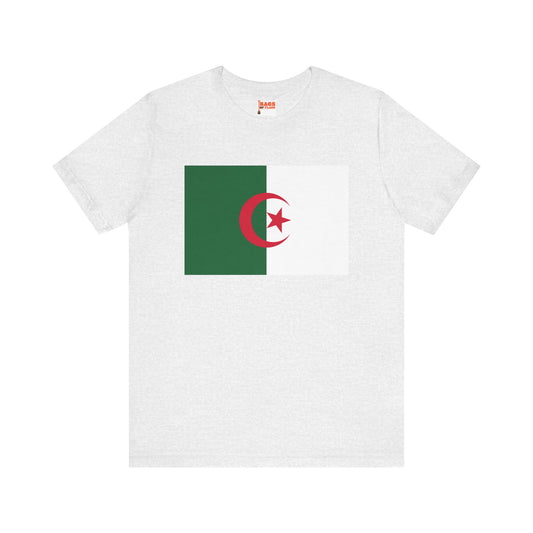-
Algeria Pillow
Regular price $22.65 USDRegular priceUnit price / per -
Algeria Backpack
Regular price $59.79 USDRegular priceUnit price / per -
Algeria Leather Patch Hat
Regular price $18.85 USDRegular priceUnit price / per -
Algeria Mug
Regular price $11.65 USDRegular priceUnit price / per -
Algeria Flag Sweatshirt
Regular price $34.15 USDRegular priceUnit price / per -
Algeria Sweatshirt
Regular price $34.15 USDRegular priceUnit price / per -
Algeria Inspired Hoodie
Regular price $34.40 USDRegular priceUnit price / per -
Algeria Hoodie
Regular price $34.40 USDRegular priceUnit price / per -
Algeria T-shirts
Regular price $22.79 USDRegular priceUnit price / per -
Algeria Flag on Hoodie
Regular price $34.40 USDRegular priceUnit price / per -
Algeria Inspired T-shirt
Regular price $22.79 USDRegular priceUnit price / per -
Algeria Flag on T-shirt
Regular price $22.79 USDRegular priceUnit price / per
Collection: Algeria
The Algerian flag is a symbol of pride and unity for the people of Algeria. Its vibrant colors and unique design hold significant meaning and history behind them. We will explore the fascinating facts about the Algerian flag that you may not have known before.
Overview of the Algerian Flag

The flag of Algeria showcases a striking and distinctive design, comprising two vertical halves. The left side is colored in a rich green, while the right half is pure white. At the heart of the flag, bridging both the green and white backgrounds, lies a vibrant red star and crescent. This central emblem is not only eye-catching but deeply symbolic, drawing from a rich tapestry of religious and national identity.
The green hue is closely associated with Islam, which is the dominant faith throughout Algeria, signifying the nation's religious heritage and values. In contrast, the white background offers a stark canvas symbolizing peace and purity, ideals that are fundamental to the Algerian spirit. Together, these elements combine to form a flag that is not just a national symbol, but a representation of Algeria's core values and aspirations.
Historical Context of the Algerian Flag
The journey to the adoption of the Algerian flag as we know it today is deeply intertwined with the nation's struggle for independence. The flag was officially adopted on July 3, 1962, marking a new era following the end of colonial rule by France. This pivotal moment came after a long and arduous war of independence that lasted from 1954 to 1962, a conflict that is remembered for its profound sacrifices and the resilience of the Algerian people.
The design of the flag can be traced back to 1928, credited to Messali Hadj, who is revered as a leading figure in the Algerian nationalist movement. The incorporation of the star and crescent, longstanding symbols of Islam, into the flag was a deliberate choice to affirm the country's Muslim identity amidst the quest for sovereignty. This choice was emblematic, not just of the nation's religious affiliation, but also of its broader cultural and historical identity.
The adoption of the flag did not just signify the attainment of independence; it was also a declaration of Algeria's values, identity, and aspirations to the world. The flag emerged from the crucible of the liberation struggle, embodying the hope, tenacity, and unity of the Algerian people in their quest to forge a free and sovereign nation.
Symbolism Embedded in the Algerian Flag

Each element of the Algerian flag is charged with significant symbolic value that speaks to the heart and history of the nation. The vibrant green color of the flag is deeply intertwined with Islam, reflecting not only the religious but also the cultural and political identity of Algeria. This choice underscores a communal heritage and a collective vision for the future, linking the present to a respected past. The white, splitting the flag vertically, is a canvas of peace and purity, ideals at the core of the Algerian ethos and aspirations for a harmonious society. It represents a clean break from the strife of the past, aiming towards a future filled with hope and unity.
Central to the flag's design, the red star and crescent serve as powerful emblems of freedom and resilience. The star and crescent, while universally recognized symbols of Islam, are particularly resonant for Algerians as they commemorate the blood shed and sacrifices made in the pursuit of independence. The red color, vibrant and bold, echoes the courage and valiant struggles of those who fought for Algeria's sovereignty, making the ultimate sacrifice for their country's future. Together, these symbols and colors weave a narrative of liberation, faith, and enduring hope, embodying the collective spirit and identity of the Algerian people.
Current Relevance of the Algerian Flag
Today, the flag of Algeria stands not only as a beacon of national pride but also as a prominent fixture in various spheres of Algerian life. Its presence is deeply felt during significant national celebrations, where it symbolizes unity and the shared aspirations of the Algerian people. Additionally, the flag is a solemn feature in military ceremonies, serving as a reminder of the sacrifices made for the country's independence and sovereignty. In recent times, the Algerian flag has also played a pivotal role in political demonstrations, where it has been brandished by protestors as a symbol of resistance and demand for systemic changes within the country.
This dual role of the flag, as both a unifying national symbol and a tool for political expression, underscores its ongoing relevance in contemporary Algerian society. Despite occasional controversies surrounding its use, the Algerian flag continues to be a powerful emblem of national identity, resilience, and the enduring spirit of the Algerian people.
Additional Facts About the Algerian Flag
When displaying the Algerian flag, there are strict protocols to ensure its dignity is upheld. It must never be allowed to touch the ground, a sign of the deep respect and reverence held for the nation's symbol. The flag’s design, while distinct in its own right, has been a source of inspiration for other national flags within the Arab world, showcasing its influential aesthetic and symbolic resonance. Notably, the flags of Mauritania and Western Sahara bear semblances to Algeria’s, reflecting a shared cultural and political narrative among these nations.
A particularly unique aspect of the Algerian flag is its role beyond the national borders. For the expansive Algerian diaspora spread across the globe, the flag serves as a potent emblem of connection and solidarity. It represents a tangible link to their homeland, embodying a sense of belonging and shared identity no matter the distance from Algeria. This symbol of unity and national pride often features prominently in cultural festivals and gatherings worldwide, fostering a global community of Algerians united under the same emblematic banner.
These insights into the Algerian flag’s protocols, influence, and global significance underscore the deep meanings and connections that national symbols can foster, not just within a country’s borders, but also within a far-reaching global diaspora.
























